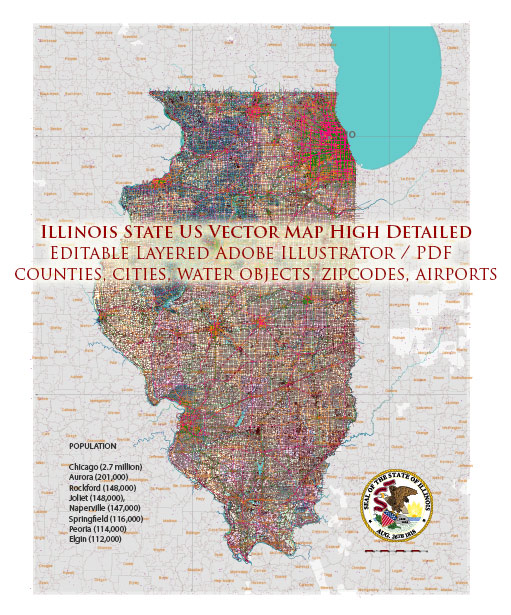The urban development of Illinois State, particularly in cities like Chicago, is a fascinating aspect of U.S. history. Here’s a brief overview:
- Early Settlement and Growth:
- Illinois was originally inhabited by Native American tribes, including the Illinois Confederation and the Miami tribe.
- European exploration and settlement began in the 17th century when French explorers like Jacques Marquette and Louis Jolliet explored the region.
- Chicago’s Rise as a Hub:
- Chicago’s location along Lake Michigan and its proximity to the Illinois River made it a crucial transportation and trading hub.
- The construction of the Illinois and Michigan Canal in the 19th century further boosted Chicago’s importance as a gateway to the West.
- Industrialization and the Great Fire:
- The late 19th century witnessed rapid industrialization in Chicago, attracting a diverse population seeking employment opportunities.
- The Great Chicago Fire of 1871, while devastating, also paved the way for modern urban planning and the construction of more fire-resistant buildings.
- Architecture and the Chicago School:
- The late 19th and early 20th centuries saw the rise of the Chicago School of Architecture, characterized by innovative skyscraper designs.
- Architects like Louis Sullivan and Daniel Burnham played pivotal roles in shaping Chicago’s skyline.
- The Great Migration:
- In the early 20th century, the Great Migration brought a large number of African Americans from the rural South to Chicago, transforming the city’s demographic and cultural landscape.
- Post-World War II Urban Renewal:
- Like many other U.S. cities, Chicago experienced post-World War II urban renewal efforts, which often involved the demolition of older neighborhoods.
- The construction of public housing projects and the expansion of transportation infrastructure were key elements of this period.
- Civil Rights Movement and Urban Challenges:
- The Civil Rights Movement in the mid-20th century also impacted Illinois, with Chicago being a focal point for activism.
- Issues of racial segregation, housing discrimination, and economic disparities persisted, leading to various social and political movements.
- Modern Challenges and Redevelopment:
- In recent decades, Illinois cities have faced challenges such as deindustrialization, population shifts, and economic restructuring.
- Efforts at urban redevelopment, including the revitalization of neighborhoods and the creation of cultural districts, have been ongoing.
- Transportation and Infrastructure:
- Illinois, especially Chicago, has been a major transportation hub with a robust network of highways, railways, and airports.
- The O’Hare International Airport, one of the busiest airports globally, has been crucial to the state’s connectivity.
Understanding the history of urban development in Illinois involves examining a complex interplay of economic, social, and cultural factors that have shaped the state’s cities over the centuries. The legacy of this development is visible in the diverse neighborhoods, architectural landmarks, and economic activities that characterize the urban landscape of Illinois today.


 Author: Kirill Shrayber, Ph.D.
Author: Kirill Shrayber, Ph.D.